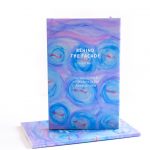There is no doubt that poetry is a form of creative expression through a rhythmic arrangement of words, but what else does it give us? And how does it manage to resonate so well with an audience?
Poetry does not just capture an audience because of the harmonious structuring of verses it also carries a message. It tells a story that evokes emotion, giving the audience a profound experience that is felt as the words build the picture in your mind. The message is laid out in a process that uses reasoning throughout the poem progression. This is how the reader comes to understand the message; reasoning opens up the pathway to make it relatable.
Due to this use of reasoning poetry can be a means of analysing an idea or theory; it is not merely a report of an experience (nor the dear diary entry of the broken hearted). It poses a question for the reader to examine. Poetry looks to gain better understanding of an experience. Obviously, it is not scientific as it borrows more from a philosophical view on thoughtfulness nor is it conclusive rather it provides a starting point for inquiry. It is inviting its audience to participate through contemplation to find if the message holds true from their perspective or presents another perspective by which to examine it from.
Poetry encapsulates its message so succinctly that it does not need go on for pages and pages; it will go straight to the heart of the matter, strip away the unnecessary and leave only the essential elements. It couples this with an arrangement of words that create a rhythm and does not allow the message or story to be overly complicated by detail making it all the more memorable.
The elements of poetry have a commonality to all works of art in that it stirs up emotions, displays ideas, brings new perspectives, invites participation and encourages critical thinking. However, it should not be so strict in its structure that it constricts its formation for this would go against its very essence, as with other art forms it must be malleable. So that it continues to be innovative.
Often when we think of art the first examples to come to mind are paintings, drawings, sculptures and so forth. Sometimes we will go further and include music and drama and occasionally creative writing. Poetry however (in recent history) can be glossed over (diminished) as something belonging to the past and not relevant to the modern world. However, art is by a dictionary definition at least ‘the expression or application of human creative skill and imagination’. Poetry is the human imagination using language in a creative form to convey a story or message.
Therefore, placing it in the category of art and more importantly exposing it as currently misplaced but not the least bit irrelevant to a contemporary society, especially one looking to find meaning. Poetry comes into its own as it ‘hits the nail on the head’ of concise conceptualisation and evaluation. Through thoughtfully chosen words articulating deep understanding and creating imagery the story or message is built and examined.
Poetry explores the full spectrum of human experience and ideas in a manner that is easily grasped on both an emotional and intellectual level. Even though it can bring different meanings to an array of readers it still resonates, as the themes are universal. Quite often it is music to our ears both literally and metaphorically – there is comfort even in sorrow when sorrow is shared, your experience of pain may not be the same as my experience but we both feel sorrow at some stage and there is comfort in recognising we are not alone in this.
The concise poetic analysis is at a human level taking experience to help shape understanding and then reaching out to share the knowledge. Poetry is then a tool to impart wisdom and this connection resonates as a crucial element to human existence. If a picture tells a thousand words, then perhaps a poem is the brush that paints the picture.




